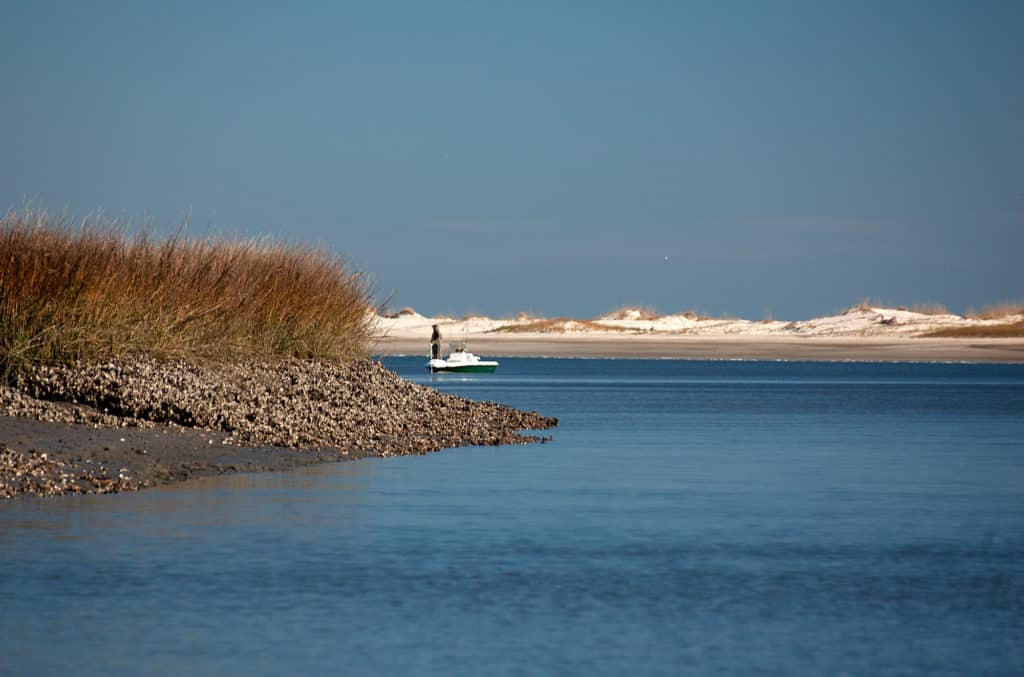
In certain parts of the country, tides range to such extremes that anglers must plan not only where and how to target their favorite species but also when. Of course, we’re not talking Bay of Fundy type tides—that Nova Scotian water body sees 50-foot daily fluctuations—but some U.S. locations see tidal 0amplitudes of 10 feet or more.
On days with the highest and lowest tides, captains in these regions sometimes even choose not to fish. Or they’ll at least put off a trip for several hours until the stage of the tide appears more favorable.
“Those early tides in the spring, you’ve got to see the water to believe it,” says Capt. David Bitters of Duxbury, Massachusetts (baymenlife.com), who fishes for striped bass and bluefish in a 25-square-mile area that comprises Duxbury Bay, Kingston Bay and Plymouth Bay, where tides can fluctuate up to 14 feet. “It doesn’t look like a bay, it looks more like a river emptying out of the bay.”
“I tend to stay away from big tides,” says Capt. Tim Cutting of St. Simons Island, Georgia (fishthegeorgiacoast.com), where two high tides and two low tides occur every day, and amplitudes can range 9 feet or more.
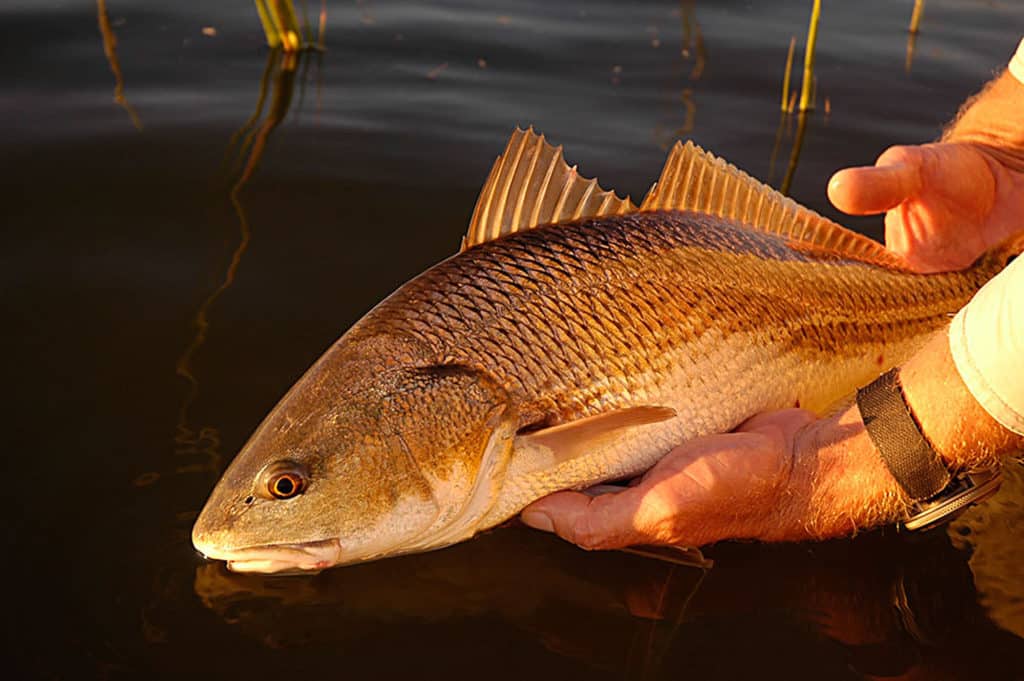
“What do I do if I have to fish them? I pray,” he adds. “Probably the easiest thing is to fish the slowest part of those tides. It changes every six hours, so I’ll fish the last hour and the first hour on the change.”
Extreme tides do create some advantages: The highs provide access to areas that are not typically fishable, and the lows expose areas that congregate fish. Big tides also dictate the type of fishing you can do. If the water is deeper than usual, captains generally bottom-bounce jigs or weighted baits. In relatively shallow water, depending on location, topwater lures can be ideal.
Here are pro tips from three very diverse regions of the country, all beset with bigger than average tides—south Georgia, Massachusetts and Alaska.
South Atlantic Bight
Tim Cutting says that the South Atlantic Bight, an indentation in the coastline between northeastern Florida and southeastern North Carolina that acts like a funnel, creates his region’s big tides. Fortunately for Cutting, the Georgia coast features a vast expanse of marshes. As tides build or subside, he can move farther inland or toward the ocean.
However, outgoing tides carry a lot of debris, such as marsh wrack. Georgia has only 100 miles of shoreline, but that equates to one-third of all the marshland on the East Coast, says Capt. Billy Bice of St. Simons Island (billybeecharters.com). “When those tides get high, they flood the marshes and pull out all of the marsh grass, seaweed … anything not attached to something is going to come out with that water, and the water gets murky.”
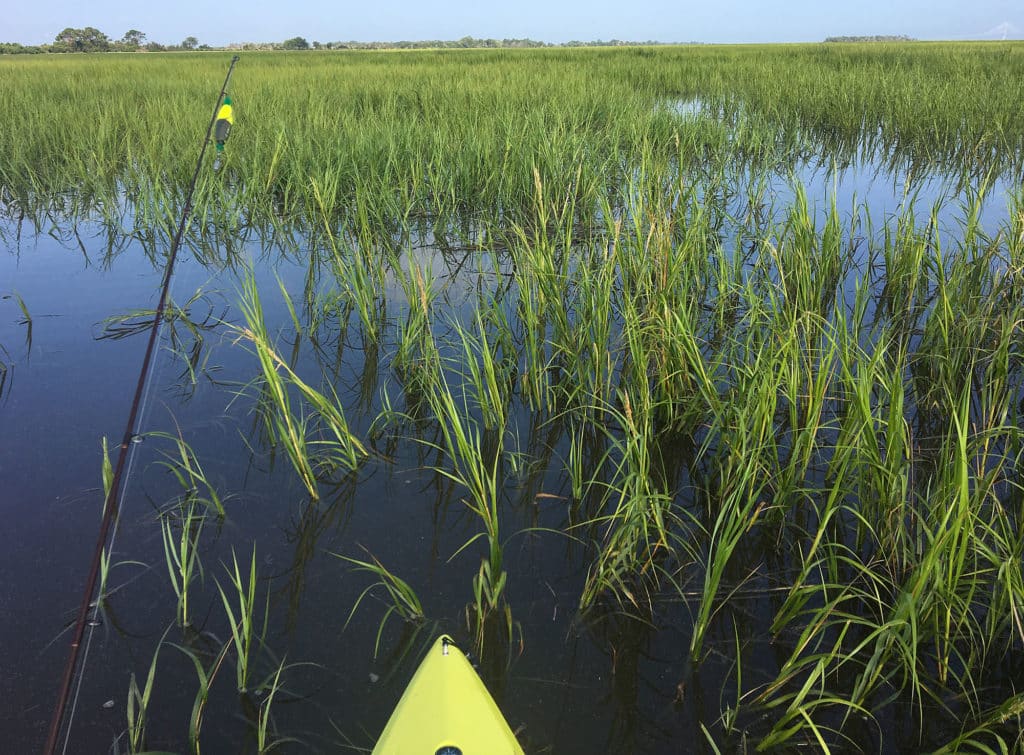
During big tides, Bice opts to fish the bottom for sharks, stingrays and whiting instead of targeting the region’s dominant inshore gamefish—redfish and trout. He uses a 27-pound anchor that “will hold the Queen Mary,” he says. “My regular anchor is 3 to 4 pounds. I’ll also use my [Minn Kota] i-Pilot trolling motor to stay in one spot.”
Bice generally rigs up with a 3-ounce sinker, but if the tidal amplitude exceeds 8 feet, “I probably go to at least 4 ounces. I use a pyramid sinker because they don’t roll quite as easily,” he says.
The water depth where he fishes ranges from 10 to 20 feet deep. He typically uses a 2500- to 3000-size spinning reel with 30-pound braid and a 6-foot rod for whiting and small bonnethead, Atlantic sharpnose, blacktip, finetooth, and scalloped hammerhead sharks. He upgrades his tackle for bigger sharks to 5000-size reels with 50-pound braid and a 7-foot rod.
Bice uses steel leaders with two 2/0 circle hooks and the sinker at the bottom of the rig for the smaller fish. His big-shark leader comprises nylon-coated 45-pound wire crimped to a No. 2 Spro swivel at one end. At the other end of the leader, he crimps a 4/0 circle hook with a 2-ounce flat sinker. With strong currents present, he adds another 2-ounce sinker.
Bice prefers to bait up with a chunk of whiting that he cuts into thirds, which also catches stingrays. For whiting, he uses locally caught shrimp and sometimes squid, which stays on a hook better than shrimp in fast-moving water. “I want the water moving,” he adds. “As long as it’s moving, I feel like I’ve got a chance to catch fish.”
In addition to fishing around tide changes, Cutting deals with turbulent, dirty water by looking for eddies, where he finds the least amount of current. He employs an old-school technique that’s common in the area: fishing with an adjustable float rig, known locally as a pole float, specifically a Harper’s Super Striker float made by the Altamaha River Trading Co.
The rig employs a rubber stopper or a piece of monofilament tied in a uni-knot on the main line above a plastic bead and the float. Anglers slide the stopper or knot to set the depth of the float, which is weighted.
“Say you park the boat in 9 feet, you set the cork at 8½ feet and you’re not dragging the bottom,” Cutting says. “Just feed the line out the back of the boat. That’s how a lot of guides used to fish. It’s similar to free-lining a shrimp.
“The bait actually floats with the current, which is natural. You’re using the float to navigate the current. Once it gets to a point or a creek mouth or where the bottom comes up real drastically or goes down, the fish are hiding there. It’s like fishing a trout stream. The saltwater species hover at or near the bottom, but they’re looking up to eat.”
The bigger the float, the heavier the weight. However, too much weight submerges the cork and too little weight causes the bait to swing up. When the weight matches the float, the float drifts vertically. If the cork starts to drag, lower the knot to shorten the amount of line in the water.
“It’s a nice presentation, and not out of control,” Cutting says. “I like to fish the bait 2 inches to 2 feet from the bottom.”
Cutting uses 10- or 15-pound braid on 1000-size spinners, and 20-pound braid on 2500- to 3000-size reels. His ties 12 to 18 inches of 20-pound fluorocarbon leader to a No. 1 or 2 kahle hook with any type of loop knot. The relatively small hook keeps the shrimp alive longer while hooking plenty of big fish. He attaches the top of the leader to the swivel at the bottom of the float with a Palomar, jam, or improved clinch knot.
Besides live shrimp, he also uses finger mullet and mud minnows, as well as pogies during summer.
When he’s jig fishing, Cutting’s top lures include soft-plastic swimbaits made by Bass Assassin, D.O.A., and Down South Lures, as well as D.O.A. shrimp. “Usually you want your bait to float with the current,” Cutting says. “I’ll throw the lures as far as I can and let it float free-line.”
Go with as light a jig head as you’re comfortable with, as long as you have bottom contact, he advises. “If I’m fishing six feet of water, I never use more than a quarter-ounce. In 20, feet I use a half-ounce. You want the lure banging the bottom and puffing mud. It’s looking like something that’s struggling in the current. The bite is going to be a tick or a tap, sometimes a thump. If you feel something, you just jerk. It’s a fun way to fish, and very effective.”
Northeast
In the southeastern waters of the Bay State, Capt. David Bitters says the average daily tidal amplitude measures nine feet, and the biggest fluctuations occur in May, when the difference between high and low tides can total almost 15 feet. “We fish the highs,” Bitters adds. “The lows can be tough until they bottom out. The high tide’s great because it floods everything and lets the baitfish get up into areas that they haven’t been able to go. Bass tend to chase the bait right up into the grasses, which is a lot of fun.”
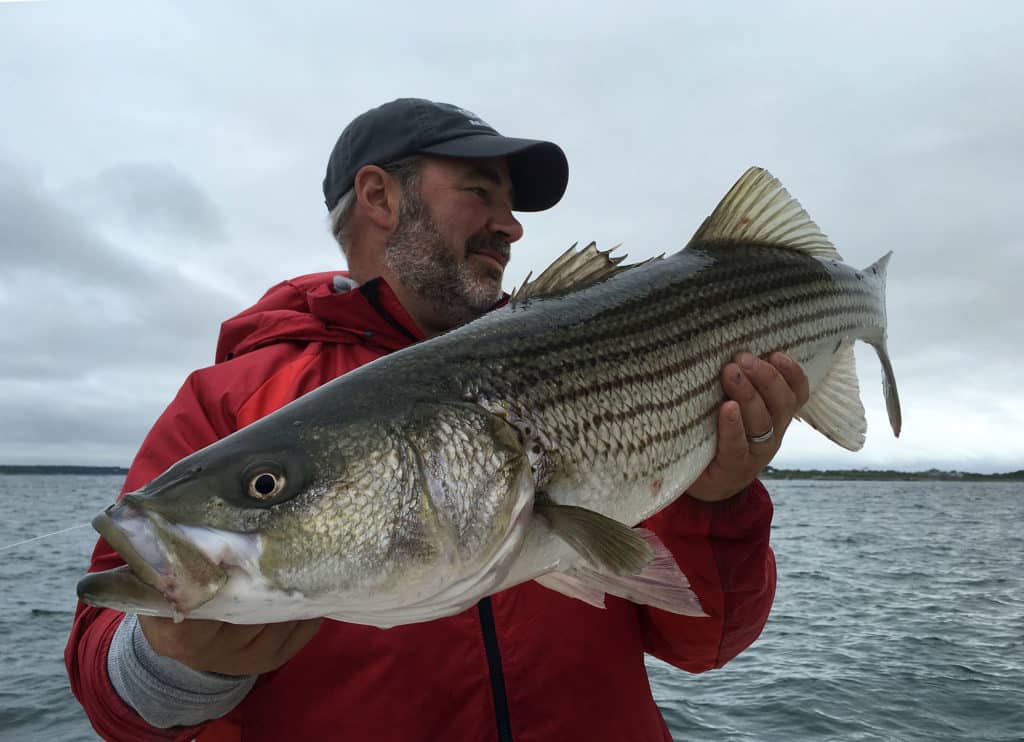
During the last few hours of low tide, the water moves at 5 knots or more, drawing the stripers out with it. “So we wait until it settles down for the most part, and then we get up into the guzzles [cuts] that still hold some water and we’ll throw poppers,” he says. “We’ll get fish that have dropped down into these cuts, but haven’t left the bay.”
Bitters fishes for stripers and bluefish with light spinning tackle and fly tackle. Most of his customers’ bigger fish are caught in 3 to 8 feet of water.
With less drastic low tides, when 20 to 24 inches of water remain over flats that normally lie dry, “we’re able to get up there with light-tackle poppers and fly-fishing poppers and man, it’s just like bonefishing, except you’re chasing stripers. We often call it striper bones,” he says.
In fact, one day last September, Bitters’ clients caught 100 fish on fly. The bass “cruise the flat just like bonefish and when they find the bait they corral it and they can drive it up to a shallow bank somewhere and they just absolutely slash it to pieces.”
With spinning tackle, Bitters uses 1- to 1¾-ounce Stillwater Lures Smack-It and Smack-It Jr., and Gag’s Grabbers poppers. Red-and-white and blue-and-white are his favorite colors. He modifies the lures by tying white saddle hackle on the rear hooks for more wiggle.
In deep water up to 24 feet, Bitters fishes rubber crankbaits up to 1½ ounces. However, he prefers 3 to 8 feet of water, if possible. “We do what I call the Baymen Bounce. We bounce it back as we crank it. It’s like a metronome. Every tick of the metronome, you’re twitching that lure through the water. On the pause, it drops and that’s when the fish hit it.”
For cranking, Bitters uses 4-inch Storm soft-plastic lures in pearl and bunker colors. That size works in shallow water and also can be fished effectively in up to 15 feet of water.
His tackle includes Temple Fork Outfitters 7-foot, 8- to 17-pound TAC Inshore rods with 4500-size spinning reels spooled with 30-pound PowerPro. His leader is 20-pound Berkley Big Game tied to a Sampo 180-pound barrel swivel with an improved clinch knot.
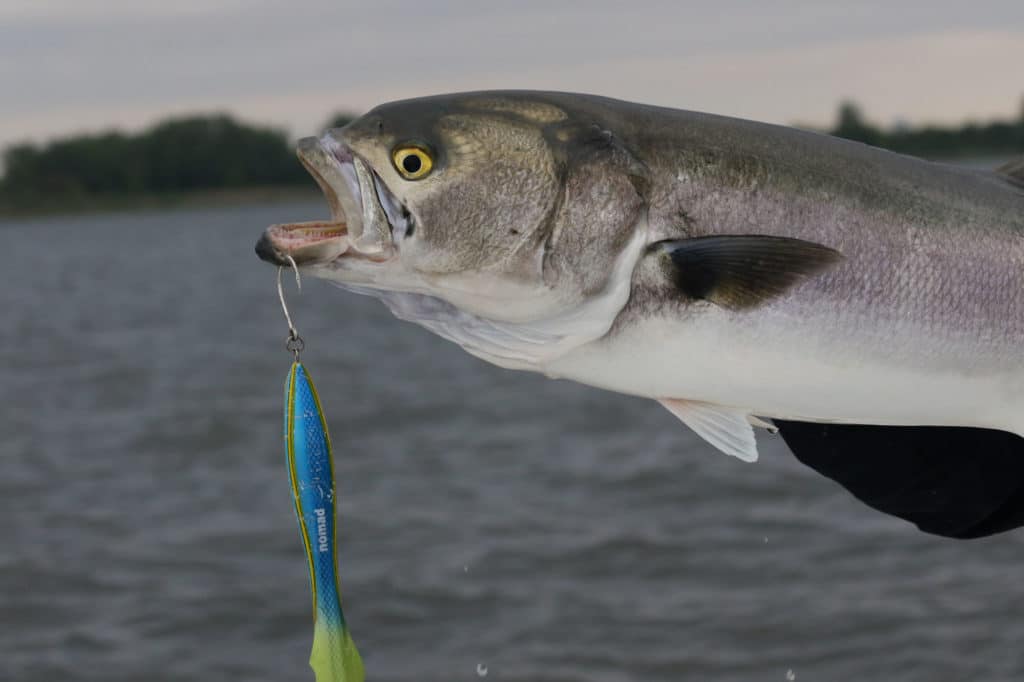
Angler Brian O’Connor of Rockport, Massachusetts, primarily uses topwater lures for striped bass and bluefish in and around Gloucester, where big tides range from 8 to 11 feet. His favorites include the Rebel Jumpin’ Minnow, R.M. Smith plugs, muskie plugs, and pencil poppers up to 3 ounces. His prefers lures with a yellow back and white belly.
Small lures that match the hatch also work, he says. His biggest striper last year— a 58-pounder—ate a 2-ounce pencil popper. He uses spinning outfits with 30-pound PowerPro Super Slick 8 and a 3- to 4-foot, 30-pound Seaguar fluorocarbon leader tied to braid mainline with an Albright knot or to a small swivel with a Palomar knot.
O’Connor plans his fishing on the strength and height of the tide. On a super-high tide, baitfish such as herring can be further up into an estuary. He said the bass position themselves where they can catch that prey yet still escape predators. “If you put yourself in that situation, you can find the fish,” he says.
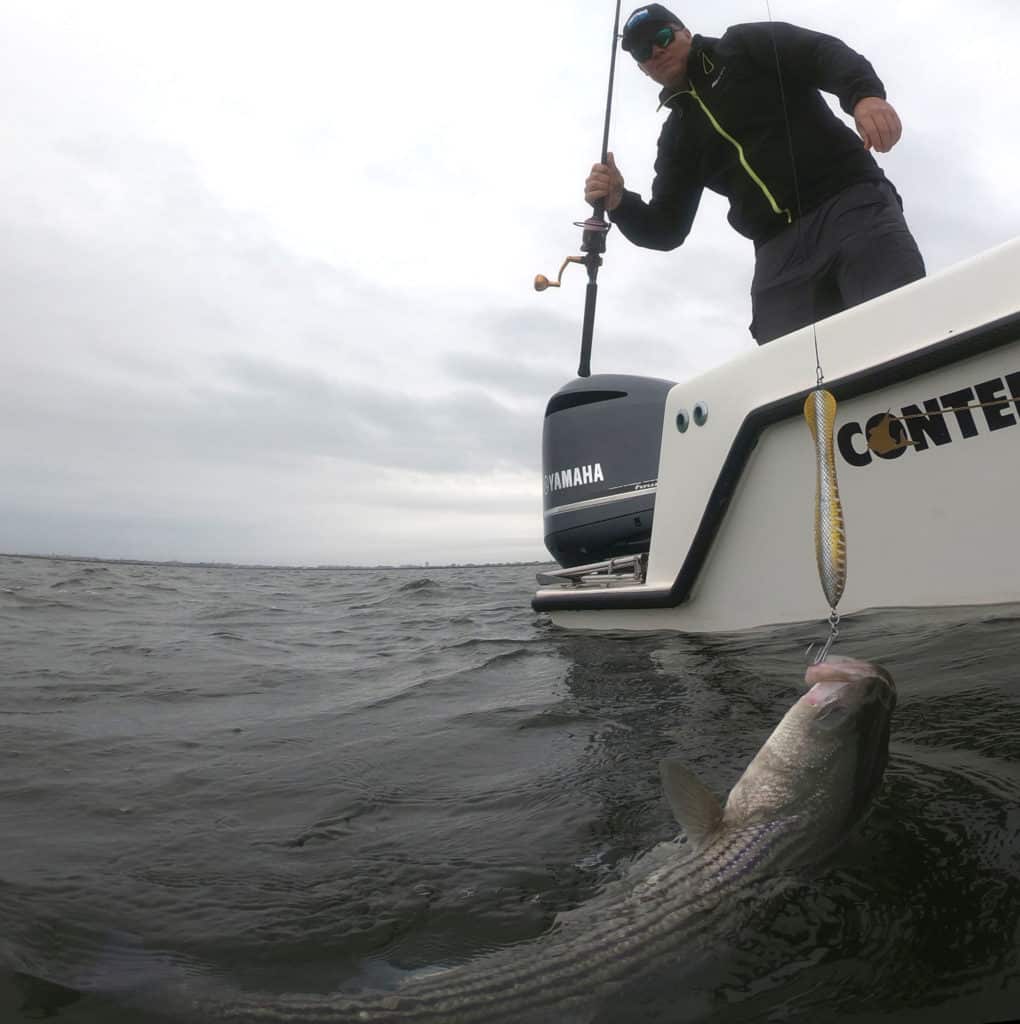
The fish don’t like fast-moving current, so they’re looking for spots where they can linger and then ride the current back to deeper water. “You want to put yourself in the position of finding an eddy where the water doesn’t rush in. You’re looking for a deep location that doesn’t have a fast current, offers safety for the bait and access and safety for the large fish,” he says.
At some tide stages, O’Connor simply waits until conditions improve.
On a strong tide with stripers on the move, O’Connor offers an effective way to fish a lure: “If it’s a fast-moving current where they’re transiting through, and they’re following that bait aggressively, I’ll take a pencil popper and throw it high up, probably 75 yards. I’ll try and get a bit of a loop cast so it comes straight down,” he says. “Let it go straight down in the water, and hold the lure underwater for about a foot, and then let it come up and then start working the plug. Just pull it as fast as you can to make it look like a darter. By the time it gets up, if there are fish there, 90 percent of the time they’ll hit that plug before you can even start working it.”
Alaska
Capt. Rob Endsley (princeofwalessportfishing.com), who fishes out of Craig in southeast Alaska, regularly deals with tides up to 13 feet. “For salmon it makes bottomfishing difficult,” Endsley says. “The good thing is that on the tide change they go on a crazy bite, because they haven’t fed in four or five hours. Lingcod lock their fins into the rocks, and they won’t get out of those rocks to go feed on anything, unless you put it right in their mouth. And same with halibut.”
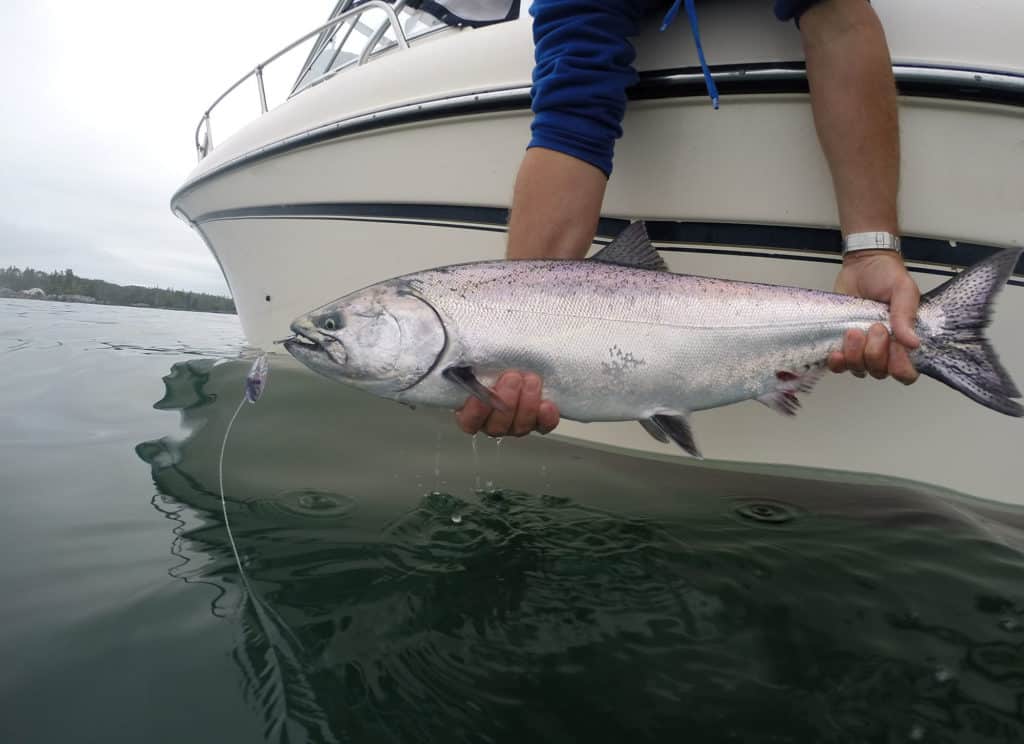
On the other hand, big tides push salmon in. “If fishing’s kind of slow, and we see big minus tides coming like next week or something, we’re licking our chops,” he says. “When an 8-foot tide drops all the way to a minus 2, that’s what we call a minus tide. There might be a 10-foot tide with a minus 3 on the end, so that’s a 13-foot tide change.”
Endsley noted that the time at which the tide changes does not mean the current changes. Generally speaking, the current changes an hour or more after the tide changes. “So even if you get there an hour before tide change, you’re still two hours before current change,” he explains. “It’ll take an hour for the current to slow down, stop and go the other way. Sometimes it’ll be two hours.”
A current change can have an impressive effect on king salmon. Endsley says that when the current rips, kings stay glued to the bottom because they don’t want to fight the flow. As soon as the tide starts to swing, bait starts moving around and the kings go crazy. “They’ll all of a sudden come off the bottom and they’ll just be running around feeding like crazy until the current gets ripping again,” he says.
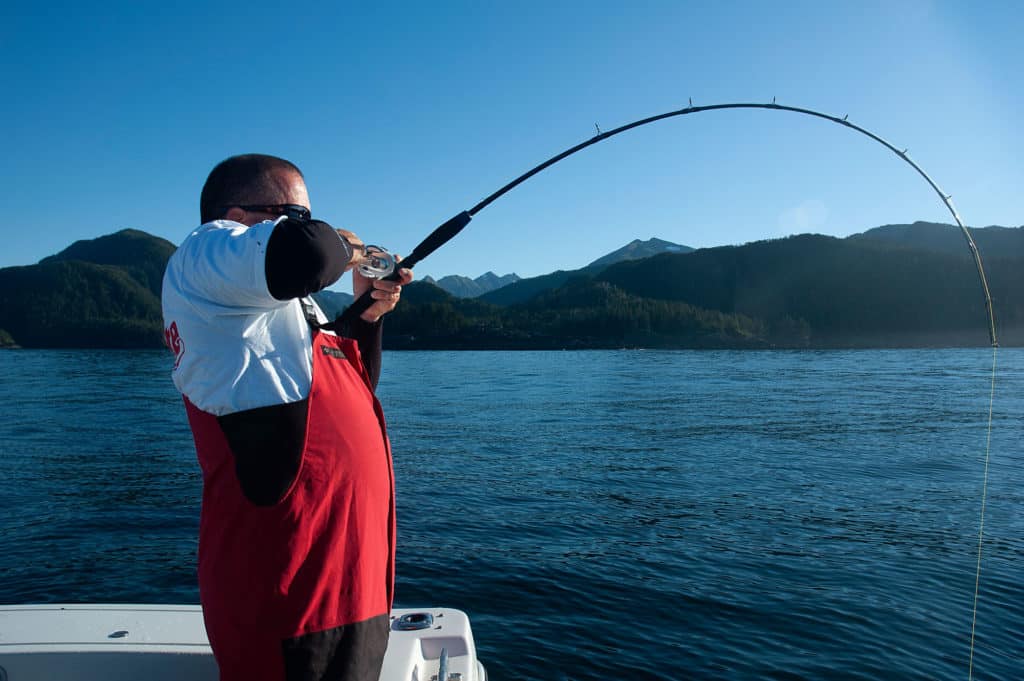
Endsley waits through a tide change when he knows the fish are there. That knowledge is key to being a successful salmon fisherman, he says. Often, anglers fish a productive spot in the middle of a tide and won’t catch anything. They report on the VHF radio that there’s nothing on the spot, and that they’re leaving.
Certain areas produce better on the high or the low tide. “Usually we fish salmon in the morning but if salmon fishing is really slow— let’s just say there’s one spot that always fishes best on a flood—then we might go halibut fishing on the early morning tide change, and then show up at the salmon spot later in the day at the end of the flood tide,” he says.
Endsley fishes three main islands—Noyes, Baker, and Suemez—which all feature big capes that jut into the ocean. As king salmon swim along the coast in the summer, heading back to their rivers, they bounce off those capes. “Sometimes out in the ocean, there’ll just be schools flushing through, and you might have a big school held up somewhere in some big pocket offshore and you catch them all through the tide,” he says.
Endsley primarily uses jigs for halibut and bottomfish. His favorite type of lure for halibut is a big scampi tail, but he also uses 14-ounce flutter jigs and sometimes a whole frozen herring. The jigs feature 10/0 hooks, and he fishes the bait on 8/0 hooks.
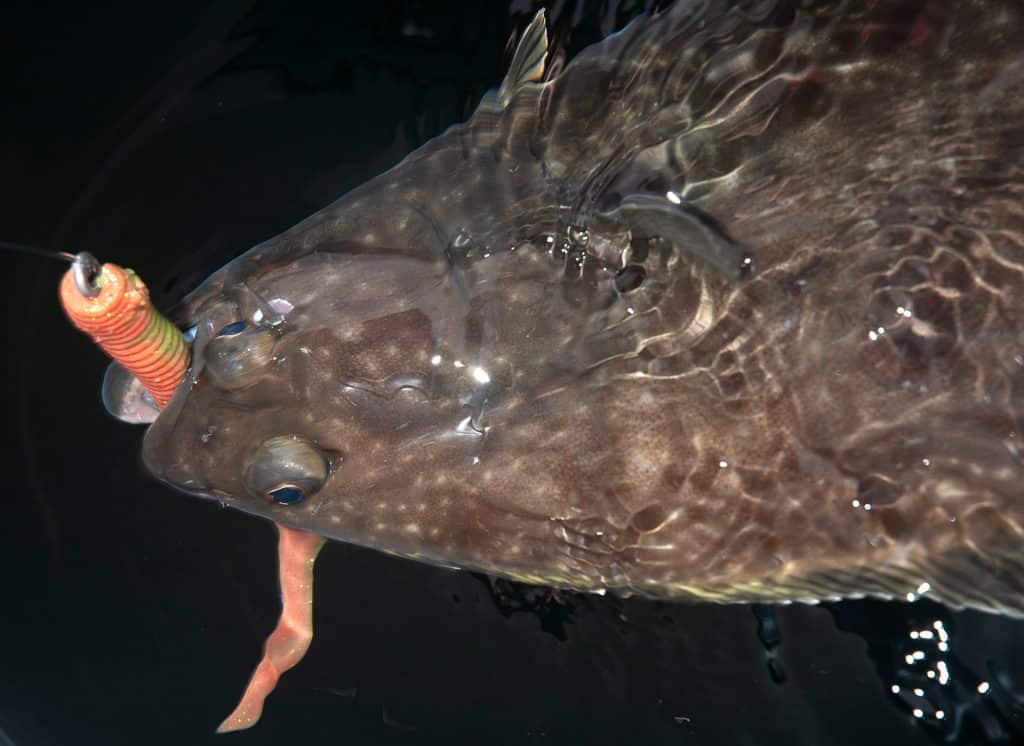
He uses light jigging rods and conventional reels spooled with 60-pound braided line, tied to 3 feet of 200-pound monofilament as a shock leader. A corkscrew swivel crimped on the end of the leader allows Endsley to quickly switch out jigs.
Read Next: How to Fish the Tides
For salmon, he usually mooches herring, using cut plugs. His salmon outfits feature a main line of 25-pound monofilament and a 6-foot, 40-pound mono leader with two 4/0 hooks in the herring. When the tide and the timing combine, salmon cannot resist that offering.








